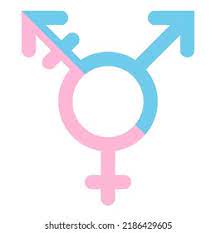Testosterone is a hormone that plays a pivotal role in various bodily functions, impacting everything from muscle growth to mood regulation. But have you ever wondered if testosterone influences your facial features? Many people are curious about the relationship between this powerful hormone and the way we look. This article will delve into the effects of testosterone on facial characteristics, exploring scientific evidence, the implications of aging, and even the differences seen between genders. Let’s get started!
What Is Testosterone and How Does It Affect You?
Testosterone is often referred to as the "male hormone," although it is present in both men and women. Produced primarily in the testes in men and the ovaries in women, testosterone is responsible for the development of male secondary sexual characteristics, such as increased muscle mass and deeper voice. Beyond physical traits, testosterone also plays a crucial role in overall health, influencing energy levels, libido, and even mood stability. As we age, testosterone levels naturally decline, which can lead to various physical and emotional changes.Does Hormone Therapy Cause Infertility
In terms of facial features, testosterone influences several aspects, including skin thickness and elasticity. Men typically have thicker skin than women, a trait that can be attributed to higher testosterone levels. This difference can affect how aging appears on the face—men may develop deeper wrinkles or sagging skin at a different rate than women. By understanding the basics of testosterone, we can begin to see how it might shape our facial appearance.
The Science Behind Testosterone and Facial Features
Research indicates that testosterone impacts facial symmetry and structure, which are often associated with attractiveness. Studies suggest that higher testosterone levels may lead to more pronounced jawlines, cheekbones, and brow ridges—features typically deemed attractive in evolutionary terms. These characteristics can convey traits like strength and dominance, making them appealing partners in the eyes of potential mates.
Moreover, testosterone’s influence isn’t limited to structural changes; it also affects fat distribution in the face. For example, higher testosterone levels can result in a leaner face, as fat tends to be stored differently compared to those with lower testosterone levels. This interplay between testosterone and facial aesthetics is complex and further emphasizes how significant this hormone is in shaping our appearances.
Can Testosterone Really Change Your Bone Structure?
When it comes to bone structure, testosterone plays a vital role in bone density and growth. During puberty, increases in testosterone can lead to bone growth and increased skeletal robustness in males compared to females. This change can result in noticeably different facial structures, such as a more pronounced jaw and cheekbones in men.
However, it’s important to note that while testosterone can influence bone growth, the degree of change can vary among individuals. Factors like genetics, overall health, and lifestyle choices significantly affect how testosterone impacts bone structure. So while testosterone may contribute to changes in facial bone structure, it’s not the sole determining factor.
Understanding the Role of Testosterone in Aging
As individuals age, testosterone levels typically decline, leading to various changes in both physical and psychological health. This drop can result in loss of muscle mass, increased body fat, and even changes in skin texture. For the face, lower testosterone levels can lead to sagging skin and more visible wrinkles, as the skin loses its elasticity and thickness.
Conversely, maintaining healthy testosterone levels through lifestyle choices like exercise and proper diet may help mitigate some of these aging effects. More balanced testosterone levels can support skin health and overall well-being, potentially leading to a more youthful appearance as we age.
Facial Hair Growth: A Side Effect of Increased Testosterone?
One of the most noticeable effects of increased testosterone is the growth of facial hair. In men, this is a natural outcome of higher testosterone levels, which stimulate hair follicles in the face. This can lead to fuller beards and mustaches, which are often associated with masculinity and maturity.
For women, elevated testosterone might also lead to unwanted facial hair growth, a condition known as hirsutism. This can cause self-esteem issues and prompt individuals to seek treatments. The relationship between testosterone and facial hair growth is a fascinating aspect of how this hormone can affect our appearance differently based on gender.
Are There Differences in Male and Female Responses?
Yes, there are significant differences in how testosterone affects men and women. While men typically experience pronounced changes in facial structure and hair growth due to higher testosterone levels, women have a more subtle response. Women generally have lower testosterone levels, but fluctuations can still lead to changes in body composition and skin characteristics.
Additionally, women may experience hormonal imbalances due to various factors such as menopause or polycystic ovary syndrome (PCOS), which can lead to changes in facial features. Understanding these differences is crucial for recognizing how testosterone impacts individuals uniquely, regardless of gender.
Myths vs. Facts: Unpacking Testosterone’s Effects
When it comes to testosterone, there are many myths floating around. One common myth is that testosterone is only relevant for bodybuilders and athletes aiming for peak performance. In reality, testosterone is vital for everyone, influencing mood, energy, and even cognitive function. Another misconception is that testosterone solely causes aggression or dominance; while there is some correlation, it’s not as straightforward as often portrayed.
Understanding the facts surrounding testosterone can help demystify its effects on appearance. It’s essential to differentiate between what is scientifically supported and what is merely a stereotype. Knowledge can empower individuals to make informed decisions regarding their health and wellness related to hormone levels.
So, does testosterone change your face? The answer is a resounding yes, but with caveats. Testosterone significantly influences various aspects of our facial features, from bone structure to skin quality and hair growth. However, the effects can vary markedly between men and women, shaped by individual hormonal levels, genetics, and lifestyle choices. By understanding the multifaceted role of testosterone in our appearances, we can appreciate the complex interplay between hormones and aesthetics. Whether you’re considering hormone therapy, managing aging, or simply curious about testosterone, it’s clear that this hormone does play a role in how we present ourselves to the world.


